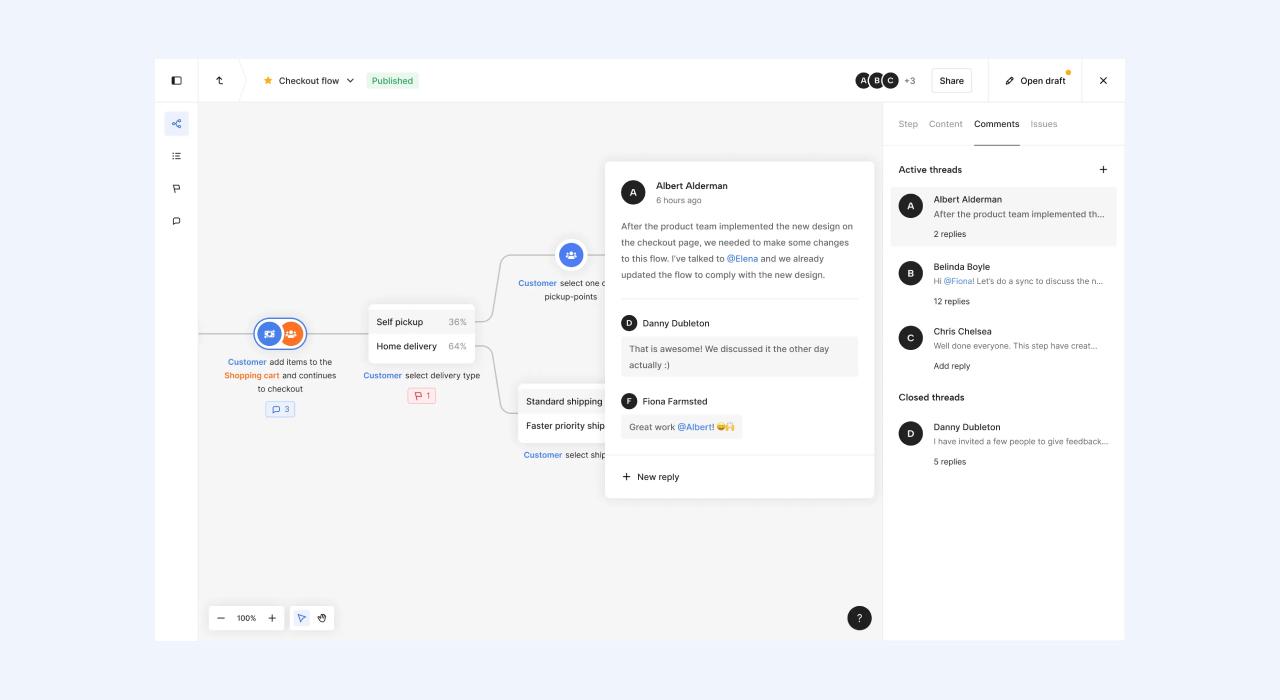
Agile organizations - The new normal: Communication in «the new normal»

As the world continues to change at a record-high pace, with tempo and agility rising to the top of the list of competitive must-haves, we also need to start thinking about how we should communicate in this new era. More and more companies are pushing for agile methods of building and leading by organizing their employees into small, autonomous and agile teams.
But the higher pace and multiple small, autonomous teams can create significant challenges in establishing strategic alignment and a common shared understanding (CSU) of the company’s main goals and direction. As Stark and Stewart put it, “autonomy without alignment can rapidly lead to chaos” (2019).
Two points for success
Stark and Stewart outline four points for success in today’s high-tempo business environment. We want to highlight two of them:
(1) Communicate a clear mission. The mission is vital because it gives the company a fixed point to guide them in this changing world; “The more complex and fast-moving the external environment, the more important it is to align agile teams on a stable overarching purpose or mission” (Stalk & Stewart, 2019).
(2) Establish a shared strategic context. According to Stalk and Stewart, “to be successful, teams need to understand the strategic landscape in which the company operates” (2019). They argue that if this understanding is in place, alignment improves and allocating resources becomes easier. In addition, it prepares the company to recognize market shifts that might signal a need to reconsider strategic assumptions.
Establish a common shared understanding (CSU)
Renowned US military theorist Colonel John Boyd also stressed the importance of establishing a common shared understanding (CSU). He saw it as essential for building trust, fostering alignment, and empowering subordinates to take informed initiative (Stalk and Stewart, 2019). According to Boyd, a CSU enables the entire military organization to operate with a consistent map of the landscape of opportunities and risks.
Stalk and Stewart argue that the same concepts apply to business. If a company is armed with the right strategic context, the “… teams will make better decisions, faster” (2019).
Visual management
A major trend in today’s field of communications is visual management. Visual management is a way of visually communicating key messages that can be interpreted, without much thought, by anyone and everyone (Greenwood, 2020).
Visual management happens when companies use visual cues, such as dashboards, figures, models, color coding, signs, and other markings, instead of written messages to communicate with their staff. As workplaces become increasingly multicultural in organizations that are broken down into small agile teams, visual management will likely be an essential tool in the future for creating a common language that surpasses linguistic and cultural barriers.
Visual management can be used to manage processes within organizations. Mapping out processes with visual cues and signs can enable the company to see better and assess its business processes and begin to improve them. It also allows everyone in the organization to see the processes the same way, which helps identify efficiencies, gaps, or unnecessary steps (Greenwood, 2020).
Interested in finding out more? We recommend these articles:
- “Visual Management: How to Communicate Effectively with Your Workforce”, by Process Street
- “Fast Execution Needs Fast Strategy”, by George Stalk and Sam Stewart, via the BCG Henderson Institute
- “Cracking the Code of Sustained Collaboration”, by Francesca Gino, in the Harvard Business Review
ShiftX is a new way to do business process modeling. By focusing on usability and collaboration, we aim to close the knowledge gap between the different groups and sections in your company, organization or unit by enabling everyone to participate and share their insights.

